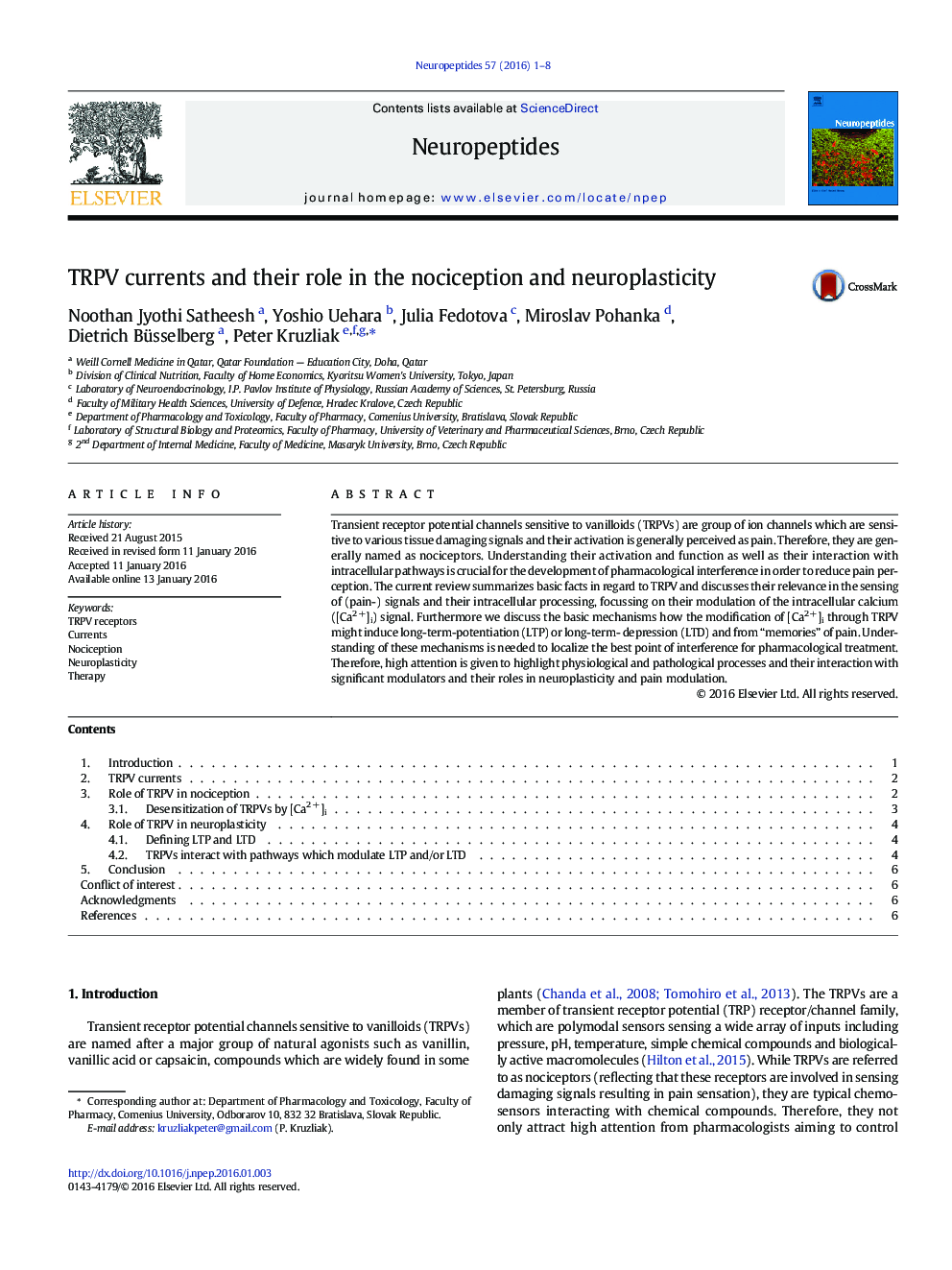| Article ID | Journal | Published Year | Pages | File Type |
|---|---|---|---|---|
| 5904077 | Neuropeptides | 2016 | 8 Pages |
â¢TRPV are group of ion channels which sensitizes various tissue damaging signals and their activation is perceived as pain.â¢They are generally named as nociceptors.â¢TRPV associated intracellular signaling pathways are crucial for pharmacological drug development to reduce pain.â¢Review focuses on crucial facts, highlighting their modulation and activation and describing their role in therapy.â¢Review also discusses on the resulting rise of [Ca2 +]i leading to the generation of long-lasting memory formation of pain.
Transient receptor potential channels sensitive to vanilloids (TRPVs) are group of ion channels which are sensitive to various tissue damaging signals and their activation is generally perceived as pain. Therefore, they are generally named as nociceptors. Understanding their activation and function as well as their interaction with intracellular pathways is crucial for the development of pharmacological interference in order to reduce pain perception. The current review summarizes basic facts in regard to TRPV and discusses their relevance in the sensing of (pain-) signals and their intracellular processing, focussing on their modulation of the intracellular calcium ([Ca2Â +]i) signal. Furthermore we discuss the basic mechanisms how the modification of [Ca2Â +]i through TRPV might induce long-term-potentiation (LTP) or long-term- depression (LTD) and from “memories” of pain. Understanding of these mechanisms is needed to localize the best point of interference for pharmacological treatment. Therefore, high attention is given to highlight physiological and pathological processes and their interaction with significant modulators and their roles in neuroplasticity and pain modulation.
Graphical abstractDownload high-res image (143KB)Download full-size image
